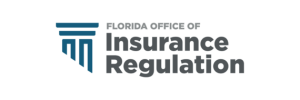Plus, more Floridians self-insuring
 As insured losses grow from the recent Hurricane Idalia, a new report shows that agricultural losses may end up being the largest of all categories. With homeowners insurance premiums continuing to rise, more Floridians are choosing self-insurance, while new rules move forward to tighten claims handling and other policy procedures. It’s all in this week’s Property Insurance News.
As insured losses grow from the recent Hurricane Idalia, a new report shows that agricultural losses may end up being the largest of all categories. With homeowners insurance premiums continuing to rise, more Floridians are choosing self-insurance, while new rules move forward to tighten claims handling and other policy procedures. It’s all in this week’s Property Insurance News.

Flooding in downtown Crystal River, FL from Hurricane Idalia, August, 30, 2023
Idalia Claims: The Florida Office of Insurance Regulation (OIR) reports Hurricane Idalia’s total estimated insurance losses at $202.3 million on just under 21,000 claims as of Thursday. About 46% of claims are closed with a nearly 3:2 ratio of paid to unpaid claims. State-backed Citizens Property Insurance has received just over 2,000 claims with an estimated payout well below the $420 million that it says would trigger assessments on all Citizens policyholders.

Chicken houses in Suwannee County after Hurricane Idalia. Courtesy, Kelly Aue, Suwannee River Partnership
The University of Florida in a preliminary report estimated agriculture losses of at least $78 million from Idalia. That number could go up to nearly $371 million depending on future updates from farmers and ranchers. About 3 million acres of agricultural lands were in the storm’s path, including row crops like peanuts and cotton, dairy and poultry farms, and aquaculture operations. Portions of Dixie, Hamilton, Lafayette, Madison, Suwannee and Taylor counties experienced Category 2-3 force winds. The report does not put a value on infrastructure damage, which it said represents a large portion of the effects of Idalia.
Idalia, which came ashore in rural Keaton Beach on August 30 as a Category 3 hurricane, was largely a flood event for most affected. The storm sent 200 miles of storm surge down the west coast of Florida and reportedly caused widespread pollution to waterways.

Florida Insurance Consumer Advocate Tasha Carter. Courtesy, DFS
Self-Insurance Growing: The Insurance Information Institute (Triple-I) in a recent survey found that more Floridians are opting to self-insure their homes due to the rising cost of premiums. Triple-I estimates 15%-20% of Florida homeowners are self-insuring, up 2% from last year and at least double the national average of 7%. Those going bare without any coverage at all are about 8% according to the latest figures which are from 2016.
Several TV stations and newspapers picked-up the story and included comments from Florida’s Insurance Consumer Advocate Tasha Carter, who warned that “It is very risky for homeowners to self-insure.” Triple-A has reported Florida homeowners insurance premiums are the highest in the nation at an average $6,000 annual premium vs. the U.S. average of $1,700.
 OIR Rules Moving Forward: The Governor and Cabinet sitting as the Financial Services Commission last week approved the formal publication of a series of rule changes reflecting recent insurance market reforms through last spring’s SB 7052, the Insurer Accountability bill. This is seen as the second to last step – barring any requests for hearings – to final adoption of the rules by OIR. The rules cover Market Conduct Examination Methodology, Claims-Handling Manuals, Reasonableness of Benefits in Relation to Premiums, Mediation of Property Insurance Claims, and annual and quarterly reporting requirements, among many others.
OIR Rules Moving Forward: The Governor and Cabinet sitting as the Financial Services Commission last week approved the formal publication of a series of rule changes reflecting recent insurance market reforms through last spring’s SB 7052, the Insurer Accountability bill. This is seen as the second to last step – barring any requests for hearings – to final adoption of the rules by OIR. The rules cover Market Conduct Examination Methodology, Claims-Handling Manuals, Reasonableness of Benefits in Relation to Premiums, Mediation of Property Insurance Claims, and annual and quarterly reporting requirements, among many others.
LMA Newsletter of 9-25-23

